Digital Trend Alert
examining hot topics in the high-tech, entertainment and digital industries
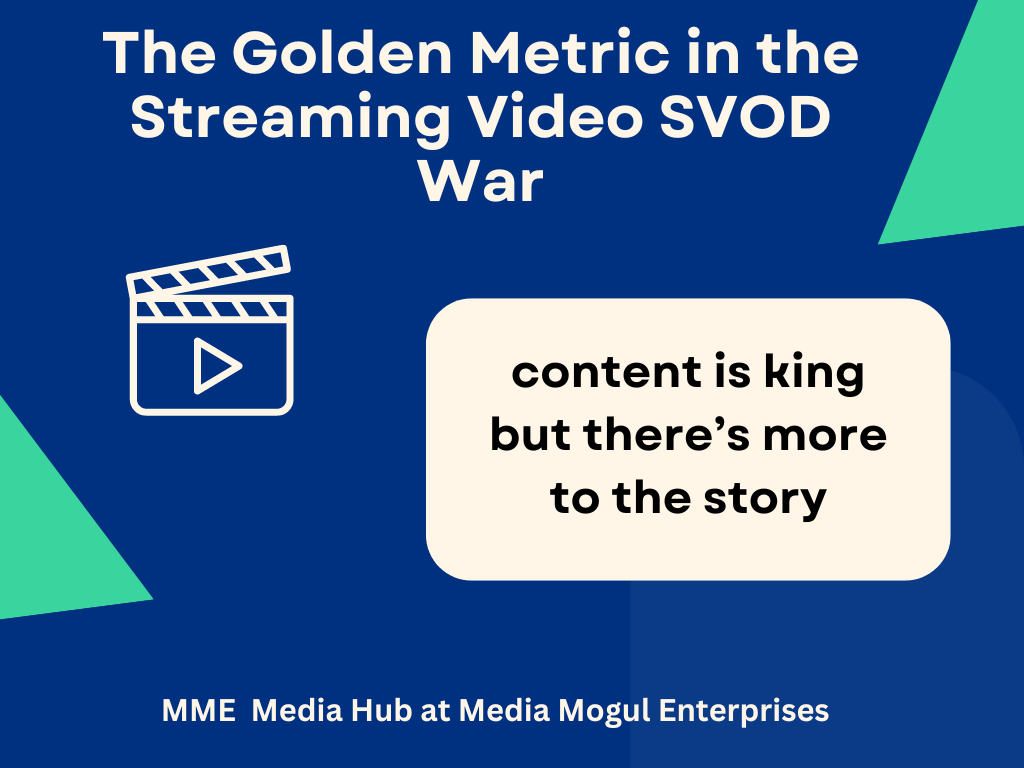
The Golden Metric in the Streaming Video SVOD War
content is king but there’s more to the story
by Carol Ingley, president
Media Mogul Enterprises
Week of April 22, 2024 through Week of June 10, 2024
Key words and phrases: frontier technologies, streaming video, SVOD, ARPU, Netflix, Disney+, Hulu, Amazon Prime Video, content, pricing, pricing tiers, AI, 5G, 6G, virtual reality, augmented reality, mixed reality, strategies
Introduction
The world of streaming video SVOD is a battlefield. Netflix, Disney+, Hulu, Amazon Prime Video — the list goes on — are all vying for your eyeballs. It’s a dynamic battlefield right now, shaped by ongoing changes and transformations in the marketplace. Frontier technologies such as artificial intelligence are some of the main disruptors.
Content is king for SVOD services. As important as content is, your monthly subscription fee is important as well. Without that monthly revenue flow, these services would not flourish. Yet beyond the flashy content libraries and subscriber numbers, there’s a quieter metric that holds the key to SVOD’s success, known as ARPU.
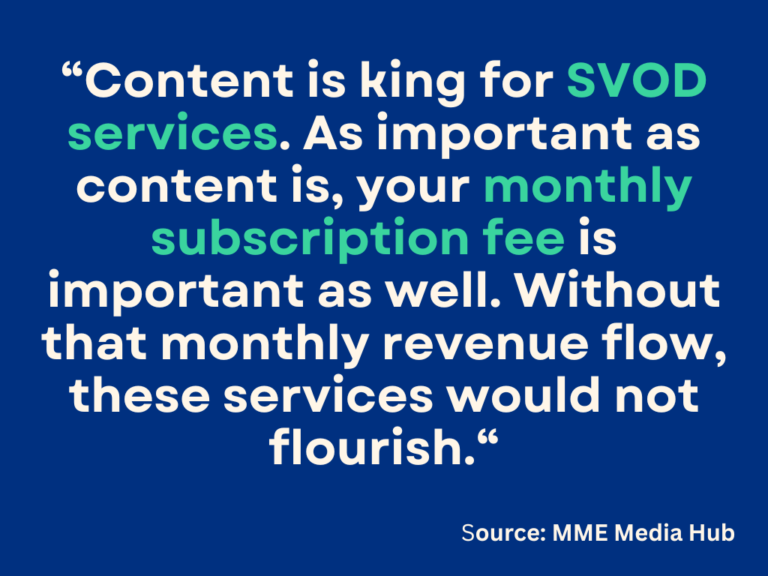
Definitions
It’s always handy to start with definitions. SVOD stands for subscription video on demand, and it is a subset of streaming video. SVOD services allow consumers to watch online videos, films, TV series and TV broadcasts whenever they want for a monthly fee. ARPU is defined as the average revenue per user (or per subscriber, as is the case in SVOD). Finally, there is something called churn. It is the measure of how many customers stop using a service or product.
Immense Popularity
Let’s start with the immense popularity these SVOD services have generated. With their on-demand format, diverse content libraries, and user-friendly interfaces, SVOD services have invested heavily in both acquiring and producing high-quality content as well as attracting millions of subscribers worldwide.
But it’s a tough business. With a flick of a finger or the click of a mouse to cancel, a subscriber can be lost. The golden metric, ARPU, can help tell the story.
Calculating and Using ARPU
Here’s how to calculate the average revenue per user/subscriber or ARPU:
- Total Revenue: Determine the total revenue for a specific period. This could be monthly, quarterly, or annually.
- Total Users/Subscribers: In this case, it is subscribers not users. Determine the total number of subscribers for the same period.
- Calculate ARPU: Take the total revenue divided by the total number of subscribers to calculate the ARPU.
Driving up the metric ARPU are the subscribers that are willing to pay premium subscription fees for unique, high-quality content which they can’t find elsewhere. These premium subscribers are less price sensitive. In addition, a higher ARPU provides SVOD services with more resources to invest in content creation and acquisition.
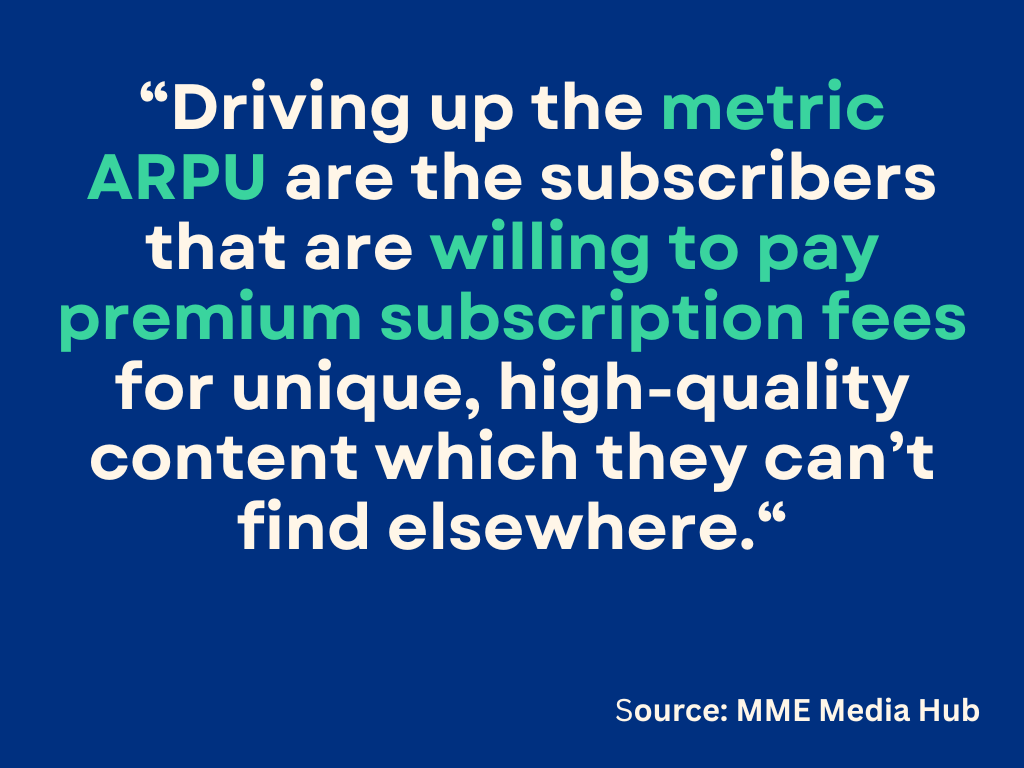
Yet pricing must remain competitive to attract and retain subscribers not just at higher price levels but at lower price levels as well. In other words, there must be a pricing tier to attract subscribers who are more price sensitive.
In short, SVOD companies are forced to strike a balance between offering value to each subscription price level and continuous innovation.
There’s more to the story. A high ARPU might sound like the right path, more revenue per subscriber. But if the tradeoff is, while the premium customers are happy, the lower tier customers are not and begin leaving the service. ARPU, then, must be tracked along with subscriber growth and churn. There is a sweet spot with the ARPU where the metric continues to grow along with subscriber growth at each pricing tier and, as well, there is lower churn.
What is happening now is that many SVOD companies are raising prices including prices for the lower priced tiers. While this may not initially lead to churn, i.e., subscribers leaving the service, there is a price point where subscribers become price sensitive. If the price gets too high, churn will increase. Again, it’s a balance.
Strategies and Disruptive Technologies
But there’s more to the equation of high ARPU, steady subscriber growth and low churn.
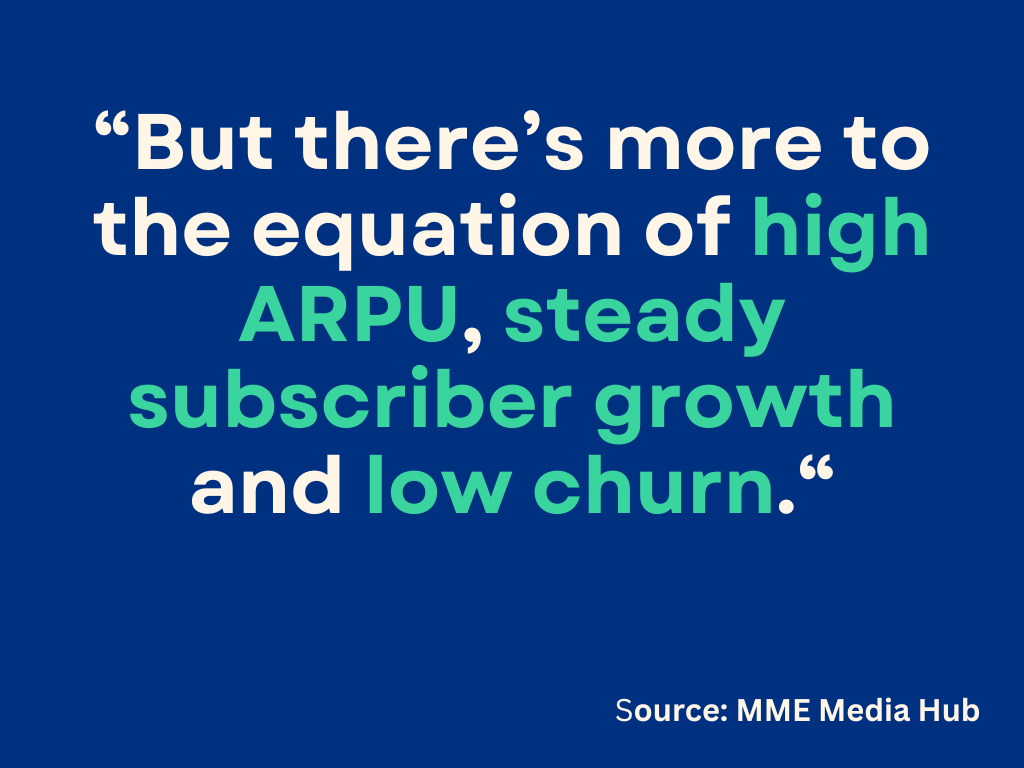
For SVOD companies to thrive, having innovative strategies in place or being developed is particularly important now. That’s because frontier technologies, especially artificial intelligence, are changing the rules of the game.
Netflix, early on, was the master of strategy. The company transitioned to streaming while slowly phasing out its mailing DVDs business. This was a significant pivot, allowing Netflix to emerge as a leader in streaming video. Netflix created the subscription fee with unlimited viewing model. Investing in technology and creating original content were also key early strategic moves.
Disruptive technologies are shaking up Hollywood and the way it always has been. Change is here. AI brings personalization and content creation. It may be that personalization can be leveraged in new and exciting ways. Certainly, content creation is going to change.
Then there is the interactive and immersive world that is taking off in the form of virtual reality, augmented reality and mixed reality. 5G and 6G will enhance streaming capabilities whereas the metaverse, big data, cloud and blockchain all bring new ways of doing things in the SVOD world. Finally, collaborations and mergers are likely to continue and increase.
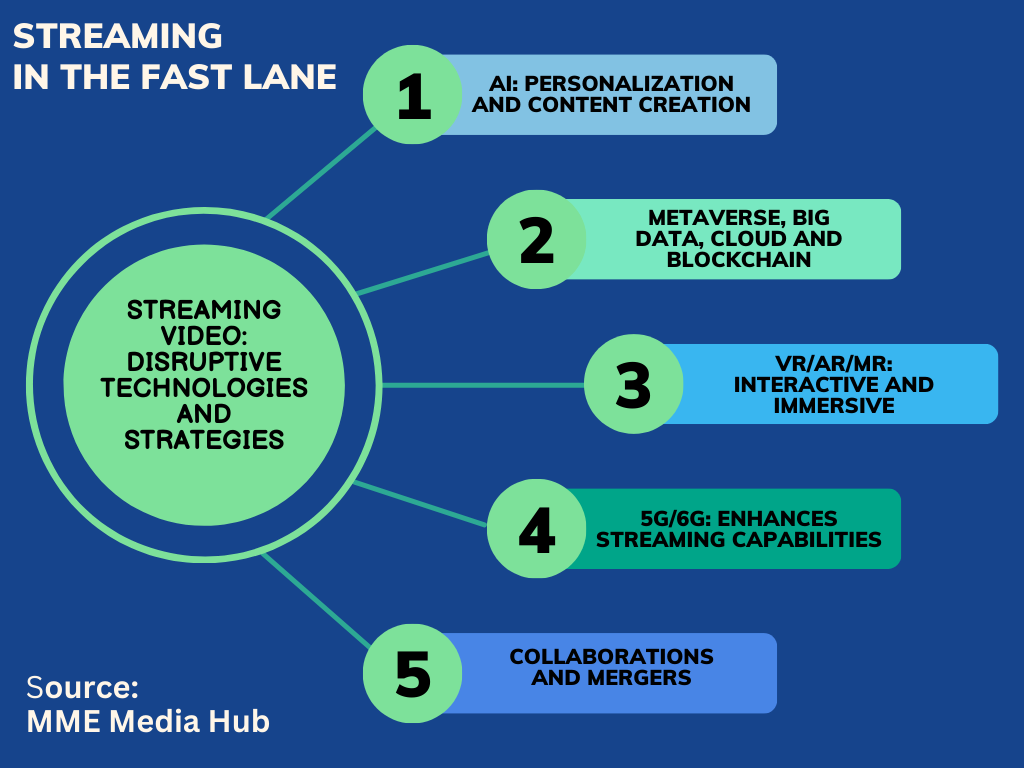
Summary
Having high ARPUs, significant subscriber growth and low churn are key to the future of SVOD companies. But they must develop strategies that encompass frontier technologies, as well as other strategies such as pricing and content. Everything about SVOD services needs to be examined, now more than ever, as these companies grow and change in a very challenging marketplace.
About the Author: Carol Ingley, president, Media Mogul Enterprises, is a strategist, technologist, author and network/finance/marketing consultant.
Digital Trend Alert
